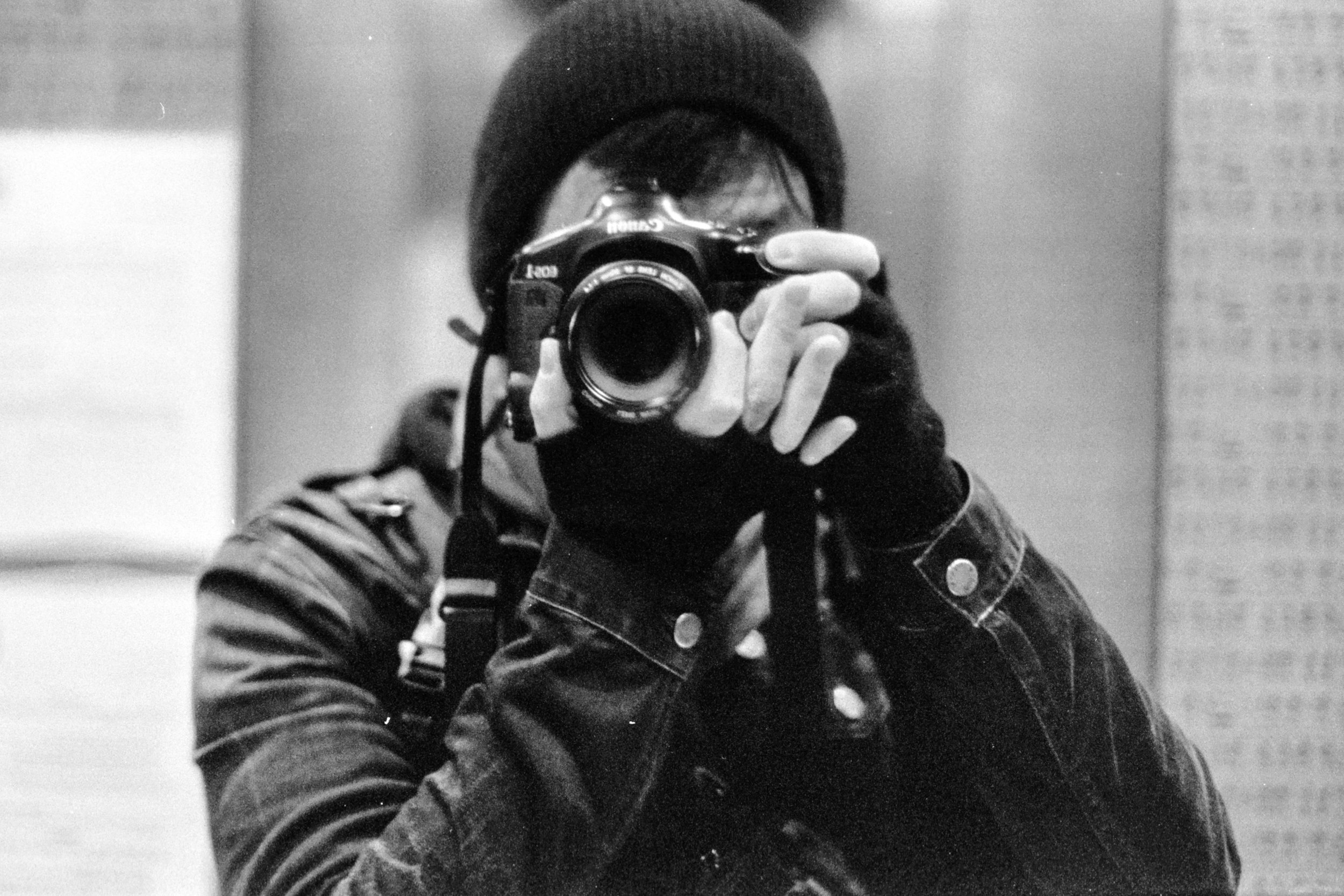To Get or Not to Get - the Leica M10-D
I owe a debt of gratitude to the Leica MD Typ 262. The success of this blog can be traced back to the review I did on that camera. When it was released, the MD 262 was regarded with curiosity if not skepticism. It is a digital camera without a rear LCD screen, after all. So as you can imagine, not many bought into the MD 262. But since I was daft enough to get one, and since I reviewed it, many found their way to my efforts, thus giving this blog its first boost in readership.
At the time of publishing that review, I was completely head-over-heels with the Leica MD 262. I couldn’t understand why more camera manufacturers didn’t follow suit. Despite the obvious issue of uncertainty in capture, the lack of a rear LCD screen was immensely liberating. It meant the outcome of the documentation process was no longer the focus of attention, but rather the effort in that process to optimize the outcome.
In retrospect, I suppose I would have continued to favor the Leica MD Typ 262 - had I not started to blog. But over the last two and a half years, I had a change of heart. Given the need for greater certainty in documentation, I started to drift away from the MD 262. In its place, I replaced it with the Leica SL, and then the Leica M10. Needless to say, the MD 262 had ceased to be the apple of my eyes. And so a week ago, I finally put it out of its misery and parted ways with it.
Leica MP-6 + Leica 35mm f/2 Summicron-M Version IV + Kodak Tri-X 400
Leica MP-6 + Leica 35mm f/2 Summicron-M Version IV + Kodak Tri-X 400
Leica MP-6 + Leica 35mm f/2 Summicron-M Version IV + Kodak Tri-X 400
Leica MP-6 + Leica 35mm f/2 Summicron-M Version IV + Kodak Tri-X 400
Leica MP-6 + Leica 35mm f/2 Summicron-M Version IV + Kodak Tri-X 400
Leica MP-6 + Leica 35mm f/2 Summicron-M Version IV + Kodak Tri-X 400
Leica MP-6 + Leica 35mm f/2 Summicron-M Version IV + Kodak Tri-X 400
Leica MP-6 + Leica 35mm f/2 Summicron-M Version IV + Kodak Tri-X 400
To be fair to the MD 262, it’s not as if I disliked it. On the contrary, I liked it very much, which I’ve already indicated. Specifically, I enjoyed how it combined the best of both worlds, in bridging the satisfaction of analog shooting with the convenience of a digital workflow. But now that I’ve had a few years of camera blogging under my belt, my feelings towards the MD 262 have leveled out considerably from the more encouraging opinion I had a few years earlier.
This is not to say that I am against cameras without rear LCD screens. However, I only believe they make sense for those who want the analog shooting experience, but cannot cope with the hassle of film. To that end, these cameras do serve a functional purpose. I mean, let’s face it. Film cannot compare to the convenience of a digital workflow. And for many, the need to address the extra steps in processing film can be prohibitively too difficult to carry out.
It’s not as if everyone has a darkroom at home, a photographic lab in town, or even access to a purpose-built negative scanner. Moreover, it’s not as if everyone has the time, physical mobility, or resource to deal with an analog workflow. In that way, I can understand the appeal of the MD 262 for those who want to preserve the analog shooting experience. The love of photography should never encumber anyone needlessly.
Leica MP-6 + Leica 35mm f/2 Summicron-M Version IV + Kodak Tri-X 400
Leica MP-6 + Leica 35mm f/2 Summicron-M Version IV + Kodak Tri-X 400
Leica MP-6 + Leica 35mm f/2 Summicron-M Version IV + Kodak Tri-X 400
Leica MP-6 + Leica 35mm f/2 Summicron-M Version IV + Kodak Tri-X 400
Leica MP-6 + Leica 35mm f/2 Summicron-M Version IV + Kodak Tri-X 400
Leica MP-6 + Leica 35mm f/2 Summicron-M Version IV + Kodak Tri-X 400
Leica MP-6 + Leica 35mm f/2 Summicron-M Version IV + Kodak Tri-X 400
Leica MP-6 + Leica 35mm f/2 Summicron-M Version IV + Kodak Tri-X 400
From that perspective, I believe the new Leica M10-D makes a great deal of sense. After all, it has a much improved image sensor compared to the outgoing MD 262… in addition to the newer M10 ISO dial, a dedicated exposure compensation dial, and connectivity to an external EVF and smart device through an APP. And did I also mention the new thumb rest in the form of a traditional film advance winder? I mean, with such a total package offering, who could resist it!
To be perfectly blunt, I am disappointed with the M10-D. Except for the improved image sensor, I find it significantly more disingenuous in conception than the MD 262. The fact that this camera has connectivity to an EVF defeats the purpose of omitting a rear LCD screen. I mean, the point of a camera like this is to give one the analog shooting experience without the inconvenience of processing film. I mean, if you can use an EVF, why not just keep the LCD screen?
And my criticism does not end there. I also take issue with the new thumb rest that mimics a non-functioning film advance winder. The fact that this design element was included in the new M10-D demonstrates the true intent of this camera. By including this vestigial fragment of a film camera, the M10-D is more a novelty than an authentic attempt to offer the analog shooting experience. Because of that, I cannot in good conscience consider this camera for myself.
Leica MP-6 + Leica 35mm f/2 Summicron-M Version IV + Kodak Portra 800
Leica MP-6 + Leica 35mm f/2 Summicron-M Version IV + Kodak Portra 800
Leica MP-6 + Leica 35mm f/2 Summicron-M Version IV + Kodak Portra 800
Leica MP-6 + Leica 35mm f/2 Summicron-M Version IV + Kodak Portra 800
Leica MP-6 + Leica 35mm f/2 Summicron-M Version IV + Kodak Portra 800
Leica MP-6 + Leica 35mm f/2 Summicron-M Version IV + Kodak Portra 800
Leica MP-6 + Leica 35mm f/2 Summicron-M Version IV + Kodak Portra 800
Leica MP-6 + Leica 35mm f/2 Summicron-M Version IV + Kodak Portra 800
Mind you, this isn’t to say that the M10-D is a bad camera. In terms of the functionality it offers, it is significantly better than the MD 262. And if one is determined to get a digital camera without a rear LCD screen, the M10-D is better than the MD 262. However, being better than the MD 262 doesn’t mean that the M10-D is better than the M10. At least with the M10, the user experience is more honest than the novelty offered by the M10-D.
If only Leica went the extra mile. They should’ve made the film advance winder cock the shutter. In addition, they should’ve left the ISO dial at the back of the camera, instead of where the film rewinder is. Furthermore, they should’ve made the film rewinder the on/off switch. And last, they should have omitted any form of external viewing connectivity on the M10-D. If only they did all that, the M10-D would’ve been an authentic attempt to offer an analog shooting experience.
Still, I wonder if I would get a camera like that if it ever came out. In reality, I don’t have a credible reason to get a camera like that. Being a film photographer, I believe there is no better expression of authenticity than to be authentic in shooting film. Besides, it’s not as if I have any prohibitively challenging reason preventing me from shooting film. I live in a city with photographic labs, I have the time, I am able bodied, and I have a working Pakon F135 scanner.
Leica MP-6 + Leica 35mm f/2 Summicron-M Version IV + Fuji Superia Venus 800
Leica MP-6 + Leica 35mm f/2 Summicron-M Version IV + Fuji Superia Venus 800
Leica MP-6 + Leica 35mm f/2 Summicron-M Version IV + Fuji Superia Venus 800
Leica MP-6 + Leica 35mm f/2 Summicron-M Version IV + Fuji Superia Venus 800
Leica MP-6 + Leica 35mm f/2 Summicron-M Version IV + Fuji Superia Venus 800
Leica MP-6 + Leica 35mm f/2 Summicron-M Version IV + Fuji Superia Venus 800
Leica MP-6 + Leica 35mm f/2 Summicron-M Version IV + Fuji Superia Venus 800
Leica MP-6 + Leica 35mm f/2 Summicron-M Version IV + Fuji Superia Venus 800
What the M10-D or any other screen-less digital camera cannot do is offer the variety of different film stocks. For me, this is the reason why I finally parted ways with the MD 262 and why I won’t be considering the M10-D. The uniqueness of film rendering is worth enduring the inconvenience of an analog workflow. And if I happen to be experiencing some time constraint, I can always fall back on the M10 for a more convenient digital workflow.
As you can see on this blog post, I shot five rolls of film consisting of four different types of film on one camera over a period of two hours. Admittedly, I couldn’t enjoy the fruits of my labor right after I finished shooting, and had to wait a day for the film to be processed and an additional two hours for the negatives to be digitized. But don’t you think it’s so much more worth it, given the end results? Thing is, we make too big a deal about instant gratification.
But I digress. Like I said earlier in this blog post, there are those who truly want the satisfaction of an analog shooting experience, but without the inconvenience of its accompanying workflow. For those individuals, the Leica MD 262 or the new Leica M10-D makes sense. That said, shooting film is still infinitely more satisfying than shooting either the MD 262 or the M10-D. So if you can deal with an analog workflow, just shoot film. There is nothing more authentic than being authentic.
Leica MP-6 + Leica 35mm f/2 Summicron-M Version IV + Cinestill 800
Leica MP-6 + Leica 35mm f/2 Summicron-M Version IV + Cinestill 800
Leica MP-6 + Leica 35mm f/2 Summicron-M Version IV + Cinestill 800
Leica MP-6 + Leica 35mm f/2 Summicron-M Version IV + Cinestill 800
Leica MP-6 + Leica 35mm f/2 Summicron-M Version IV + Cinestill 800
Leica MP-6 + Leica 35mm f/2 Summicron-M Version IV + Cinestill 800
Leica MP-6 + Leica 35mm f/2 Summicron-M Version IV + Cinestill 800
Leica MP-6 + Leica 35mm f/2 Summicron-M Version IV + Cinestill 800
All images were digitized and cropped slightly on the Pakon F135 scanner. All images have been optimized on Adobe Lightroom - with white balance, exposure, black and white values, shadows and highlight tweaked. Title image has been liberally cropped.
You may have noticed that I included an additional two images per photo grouping. I couldn’t decided which images to leave out, given how satisfied I was with the results. What’s worth nothing is that I’ve included 40 images in this post, from a pool of 195 images captured. That is a hit rate of 20% which I can never get in digital capture.
This is the benefit of focusing on the shooting process rather than the outcome immediately on the rear LCD screen - something to think about.
And I am aware that I didn’t included any images from the Leica M10-D or faked it from the Leica M10. There is no point in making that comparison, because digital capture will always lose in the end.







